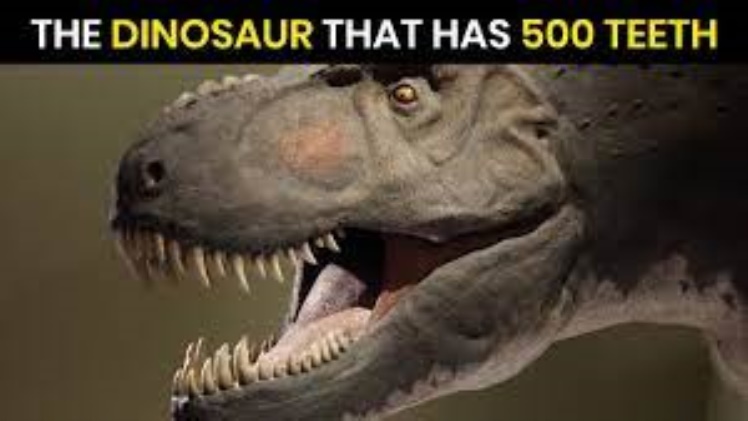Among the many species of dinosaurs, there are several that have a number of teeth. This article will examine the teeth of one such species, Nigersaurus taqueti. Nigersaurus had a number of unusual characteristics that set it apart from the rest of the dinosaurs. One of these characteristics was its wide jaws. Another was its olfactory lobes, which helped it perceive smells.
Nigersaurus taqueti
Among the most curious dinosaurs of the Mesozoic era was Nigersaurus. This sauropod was a quadrupedal herbivore. It was 30 feet long and weighed around media posts four tons. Nigersaurus lived in Africa’s Sahara Desert from 115 to 105 million years ago.
Nigersaurus was a herbivore with a big mouth and hundreds of tiny, sharp teeth. These teeth were used to trim the plants that Nigersaurus would eat. They were slender and evenly spaced. These teeth could have been used like a comb.
Nigersaurus lived in the Elrhaz Formation of the Tegama Group. The Elrhaz formation is an ancient sedimentary formation in the Republic of Niger.
Nigersaurus’s jaws were wider than its skull
During the Cretaceous period, the Nigersaurus lived in Niger’s Sahara Desert and was mainly a herbivore. Like other large herbivores, Nigersaurus eblogz probably ate soft plants.
The Nigersaurus had a large mouth lined with hundreds of teeth. The teeth in the Nigersaurus’s jaw were arranged in batteries. Each tooth was replaced every fourteen days.
The Nigersaurus lived from 119 million years ago to 99 million years ago. The Nigersaurus was a member of the sauropodomorpha. It resembled a Diplodocus, but the jaws were wider than the skull. Nigersaurus’s jaws are unique, as they are the only known sauropod to have such wide jaws.
Nigersaurus’s mouth was oriented toward the ground
Unlike most sauropods, Nigersaurus’s muzzle was directed directly at the ground. This was a peculiar adaptation, because most sauropods oriented their heads toward the sky to feed. Nigersaurus was an herbivore that fed on vegetation at ground level.
Nigersaurus lived 110 million years ago during the mid-Cretaceous period. It was a sauropod with a long whip-like tail and four pillar-like legs. Its skeleton was pneumatised, which means it was stuffed with air spaces. It had a large eye socket, an extremely broad snout, and a very large mouth lined with 500 teeth.
Nigersaurus lived in an inland floodplain with other herbivores. It grazed on flowering plants, ferns, and horsetails. Nigersaurus had a long neck, but it was not as long as most sauropods.
Nigersaurus’s olfactory lobes help the brain perceive scent
During the middle Cretaceous period, Nigersaurus, a sauropod dinosaur, inhabited the earth. It was one of the earliest dinosaurs to be discovered. It was nicknamed the “Mesozoic cow” due to its unique skull.
The fossils of Nigersaurus were discovered in the Elrhaz Formation of Niger, Africa. This formation is a layered sedimentary rock that once contained trees and rivers.
Nigersaurus had a short neck and a large mouth lined with hundreds of teeth. Nigersaurus chewed plants using these teeth and air sacs. The air sacs helped reduce its weight.
Nigersaurus lived around 110 million years ago. It was a plant-eating dinosaur that lived in the African woods and on the flood plains. It was part of a family of sauropods called the Rebbachisauridae.
Nigersaurus’s teeth extend laterally at the front of its mouth
Unlike other sauropods, Nigersaurus had a large mouth, which was lined with hundreds of teeth. The teeth were used to rip up soft vegetation and pull it into its mouth. Nigersaurus had a relatively short neck, and its snout was wide, which allowed it to graze in the Sahara desert.
Nigersaurus was one of the oldest dinosaurs ever discovered. In 2007, researchers described its skeleton and its feeding strategy. The skull was specialised for feeding, with a large intake and small olfactory lobes. It had a wide muzzle filled with 500 teeth.
Nigersaurus was a member of the Saurischia order, which includes lizard-hipped dinosaurs. It lived between 119 million years ago and 99 million years ago. It grazed in the Sahara desert, where it shared the same habitat as such predatory dinosaurs as Suchomimus.
Nigersaurus’s teeth were one of the key characteristics that set it apart from the rest of the dinosaurs
During the Albian Age of the Cretaceous period, Nigersaurus lived in Africa. It was a small sauropod with an estimated weight of about 4.4 short tons. It lived in riparian zones, where it grazed on low-lying plants.
Nigersaurus was a unique sauropod, having a short neck and wide mouth. It had 500 teeth, which were replaced every 14 days.
Nigersaurus possessed dental batteries, vertically stacked columns of replaceable teeth, located at the front of its mouth. In addition, it had four fenestrae. The fenestrae are oval windows, one of which was the fenestra vestibuli.
Nigersaurus had a unique snout, which was wider than duck-billed hadrosaurs. It had elongated bony nostrils, which were closer to the snout than in other diplodocoids.

